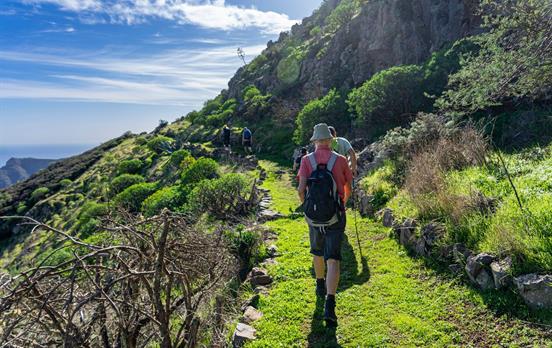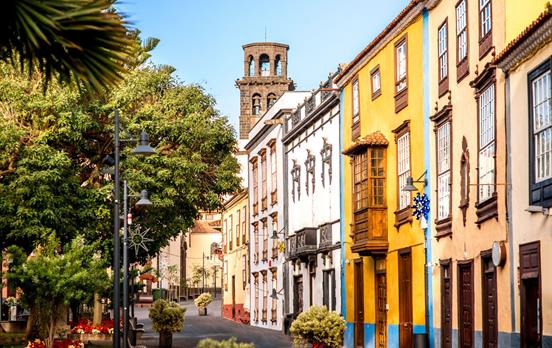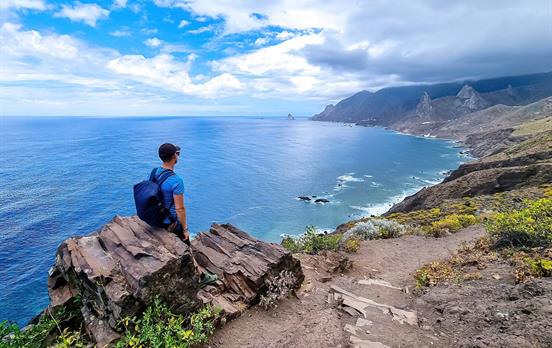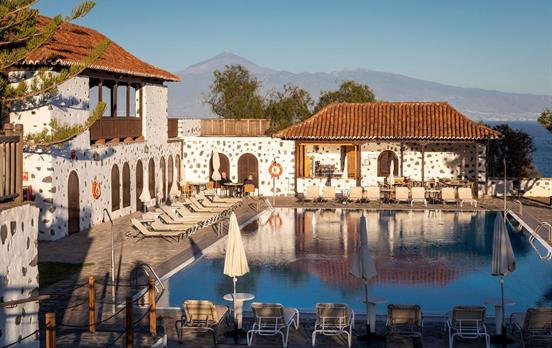8 Days &
7 Nights
Read 63 reviews
Walking in La Gomera
- A rocky coastline and verdant green gorges make La Gomera a walker's paradise
- Dense laurel forests, remnants of eras past and a UNESCO World Heritage Site
- Brightly coloured streets of San Sebastian, the tiny colonial capital
- Perfect walking temperatures - all year round
- Coastal and mountain walks and hand picked accommodation
Discover the botanical paradise of La Gomera on foot. La Gomera, the greenest of the Canary Islands, lies just 30 kilometres off the coast of Tenerife, but is a world away in terms of atmosphere and landscape. Steep cliffs along the rocky coastline give way to volcanic peaks inland and deep gorges, or barrancos, limit access to many parts of the island.
La Gomera's greatest treasures are found in the Garajonay National Park, among the dense vegetation of its mysterious laurel woods, where centuries-old trees clothed in moss give the impression of a tropical rain forest. In the valleys sculpted landscapes of terraces of banana, papaya and mango trees are equally beautiful. The rugged coast of steep cliffs and small coves are another delight.
From £1,059.00
Gallery
Itinerary
Day 1 Arrival in the Canary Islands Day 2: Walk From El Reventón Oscuro to Chipude & Garagonay National Park 7.2 miles / 11.6 km Day 3: Walk from Chipude to Vallehermoso 8.8 miles / 14.2 km Day 4: Circular walk from Vallehermoso 8.6 miles / 13.9 km Day 5: Walk from Vallehermoso to Hermigua 10.9 miles / 17.6 km Day 6: Circular walk from Hermigua 7.3 miles / 11.7 km Day 7: Walk to San Sebastián 6.1 miles / 9.9 km Day 8: Departure from the Canary Islands
THIS TRIP'S CARBON SCORE
This trip has a carbon score of 16kg per person per night, meaning it’s one of our best trips! For comparison, a carbon count of 16kg is equivalent to 6.5 packets of British butter. Here at Macs, we pride ourselves on being a responsible travel company and continue to adopt, develop and innovate ways to positively impact the environment. Find out more information on how we've carbon counted our trips.
You May Also Like
WHY MACS?
Reasons to believe in Macs Adventure:

As Seen In
Top publications including The Telegraph, The Times, & The Guardian - a testament to our trusted reputation & standout trips.

Around Since 2003
We’re still founder led & the world’s number one self-guided operator with mountains of experience.

24,000+ Customer Reviews
Plus, with multiple British Travel Awards, you know you're in good hands.

Positive Impact
We’re a proud B Corp, committed to sustainable travel & high social & environmental standards.




































 Australia
Australia New Zealand
New Zealand South Africa
South Africa European Union
European Union